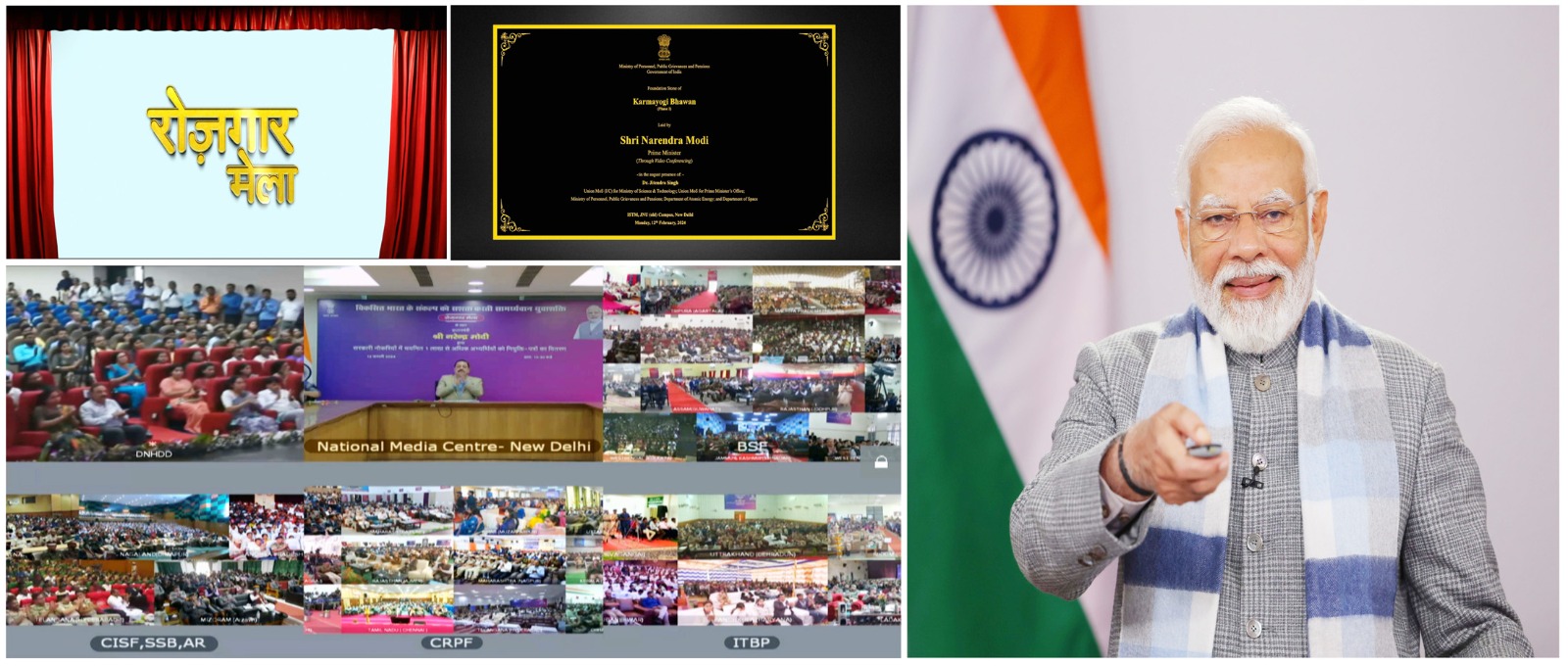Prime Minister Modi’s ambitious announcement that India would aim for net-zero emissions by 2070 has been hailed by some climate change analysts, but he also sought $1 trillion from developed countries, reminding them of their unkept promises of financial and technical support
 Dhurjati Mukherjee I INFA Service
Dhurjati Mukherjee I INFA Service

The just-concluded COP26 summit was full of commitments as is usually the case with most major international events, but how much would be achieved remains a big question. The 1997 Kyoto Protocol failed to meet its targets, while the next Copenhagen summit flopped too. The 2015 historic Paris Agreement allowed countries to make unilateral, unenforceable pledges that were far from reality. Even UN Secretary General Antonio Guterres said the idea that humanity is making enough progress is nothing but “an illusion”.
Apart from Greta Thunberg calling the meet a ‘failure’, announcements by governments and corporations, including pledges to end deforestation, phase out coal-fired plants and mobilise trillions of dollars for green initiatives, have been dismissed by most activists as insufficient, impractical, or riddled with loopholes.
Prime Minister Modi’s ambitious announcement that India would aim for net-zero emissions by 2070 has been hailed by some climate change analysts, but he also sought $1 trillion from developed countries, reminding them of their unkept promises of financial and technical support. Analysing the commitment, would it be wrong to state it would be dependent on the finances made available by developed nations? The commitment was a reversal from India’s position only a few days ago but other pledges he outlined were in line with its stand that now focus should be on curbing emissions.
It is significant that Modi committed that India would by 2030 cut one billion tonnes of carbon emissions, which means the country would reduce 22% of greenhouse gases in carbon equivalent from its inventory by that date; meet 50% of its energy needs from renewable energy, reduce its economy’s carbon intensity by 45% and increase its installed non-fossil fuel energy to 500 GW from 134 GW in 2019.
Though more clarity on how India would achieve its goals would come through the country’s formal submission of the nationally determined contributions (NDCs), the commitments appear a little too ambitious. Moreover, it is unclear in international circles whether the net zero pledge by 2070 was for carbon emissions alone or for all greenhouse gases. Though the country’s entire GHG inventory is currently less than 3 billion tonnes and it will be 4.5 billion tonnes in 2030 in a business-as-usual scenario, a section of environmentalists like Dr. Sunita Narain of CSE has rightly pointed out that given our comparatively low contributions to global emissions, coupled with the fact that our economy needs to grow at a fast pace and meet energy needs of millions of poor citizens, the commitment was not necessary at this stage.
One may also refer to Prof. Anand Patwardhan of the University of Maryland, who in a recent interview, said a comparison of the current trends between China and India would necessitate India’s target year to be long after China. According to him, “if India were to follow a similar emission trajectory, Indian emissions would not reach net zero until 2087”. He also wanted the conference to focus on finance and technology transfers needed to achieve a low carbon economy for the developing world.
The announcements have put India on a major role towards the overall mitigation action. Obviously, some serious steps need to be taken to steer the course of action in the coming years. Firstly, if 50 GW of power generation capacity has to be achieved, India must create an enabling environment. Excluding hydro projects, the country’s installed renewable capacity is about 100 GW, out of which the private sector owns 48%. Experts believe that India has the potential to produce around 900 GW in renewable energy from commercially exploitable sources, much of it from solar energy.
Obviously, to meet its targets, private and global investors need to be given special incentives. Secondly, for meeting 50% electricity generation through renewables, the country’s grid infrastructure will need to be strengthened and battery storage capacity massively increased. This apart, a large skilled workforce would be required to run the new electricity infrastructure. However, it has to be ensured that in the new era of green energy, we do not carry forward the legacy of unequal development.
The first action that India needs to take is to develop green hydrogen as the earliest. According to estimates, India is likely to consume 11.7 million tonnes of carbon intensive industrial grey hydrogen by 2030, primarily in the refinery and fertilizer sector, two-fold of the 5.6 MT today. It must ensure a large proportion of the upcoming new hydrogen capacity should be green in addition to mandating a fraction of existing capacities to go green.
To address the low supply of electrolysers in the world, India is building capacities of 20 GW of long lasting electrolysers in the coming decades but these may not be sufficient. With proactive collaboration between innovators, entrepreneurs and government, green hydrogen has the potential to drastically reduce CO2 emissions, fight climate change and put India on a path towards net zero energy imports. There may also be a time when the country may be able to export high value green products, making it one of the major economies to industrialise without the need to carbonise.
Besides, there has to be a thrust on increasing nuclear power capacity. As per an OECD report, under net zero emissions scenario, without nuclear. the minimum average cost to consumers could be two to four times higher depending on the electricity region one is talking about. Thus we can ill afford a costlier electricity supply in India. However, it is heartening to note that green hydrogen and a consequent sharp increase in the share of electricity could be leveraged to accommodate load variability in grid operation of nuclear power plants with reactors operating in near steady state, thereby making grid operations more robust.
It is necessary that though the cry of emission control is more than valid, it should not affect developmental activities. India must take every opportunity to highlight the fact that its per capita emissions are much lower than the Western world. However, it’s gratifying that the draft agreement called for the doubling of funds to help developing countries cope with climate impacts though disputes remained over money, the speed of emissions and the mention of ‘fossil fuels’, the principal cause of climate change. As is well known, the rich world has not yet delivered the $100 billion annual aid it promised to deliver last year.
Finally, one should not lose hope as green investing has become a global cry. Foreign companies are expected in India in the not-too-distant future and Indian corporates like Ambani and Adani are too in this business to expand solar power as also green hydrogen. Only time will tell how much of the commitments made by India are fulfilled. But there is a long way to go. Judicious planning, involving scientists and environmentalists with participation of technocrats both from the public and private sectors, is urgently needed.—INFA
Advertisements | 5E For Success

5 Advantages of KRC 5E MDP program, powered by KRC Foundation.
1. Employability training
2. Internship
3. Earn while you learn ( Work Experience Certificate, subject to selection and performance)
4. 100% Cashback on Fees through Global Garner
5. KRC Membership & Placement assistance.
Send your resume to get a free profiling session and selection.
Email resume: 5eforsuccess@gmail.com
WP: 9330830083





